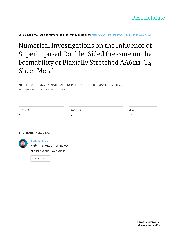摘要
Lightweight materials have been widely used in aerospace, automobile industries to meet the requirement of structural weight reduction. Due to their limited plasticity at room temperature, however, lightweight materials always exhibit distinctly poor forming capability in comparison with conventional deep drawing steels. Based on the phenomenon that the superimposed hydrostatic pressure can improve the plasticity of metal, many kinds of double-sided pressure forming processes have been proposed. In the present study, the Gurson-Tvergaard-Needleman (GTN) damage model combined with finite element method is used to investigate the influence of double-sided pressure on the deformation behavior of biaxially stretched AA6111-T4 sheet metal, including nucleation and growth of microvoids, evaluation of stress triaxiality, and so forth. The Marciniak-Kuczynski (M-K) localized necking model is used to predict the right-hand side of the forming limit diagram (FLD) of sheet metal under superimposed double-sided pressure. It is found that the superimposed double-sided pressure has no obvious effect on the nucleation of microvoids. However, the superimposed double-sided pressure can suppress the growth and coalescence of microvoids. The forming limit curve (FLC) of the biaxially stretched AA6111-T4 sheet metal under the superimposed double-sided pressure is improved and the fracture locus shifts to the left. Furthermore, the formability increase value is sensitive to the strain path.
- 出版日期2012-4
- 单位哈尔滨工业大学
